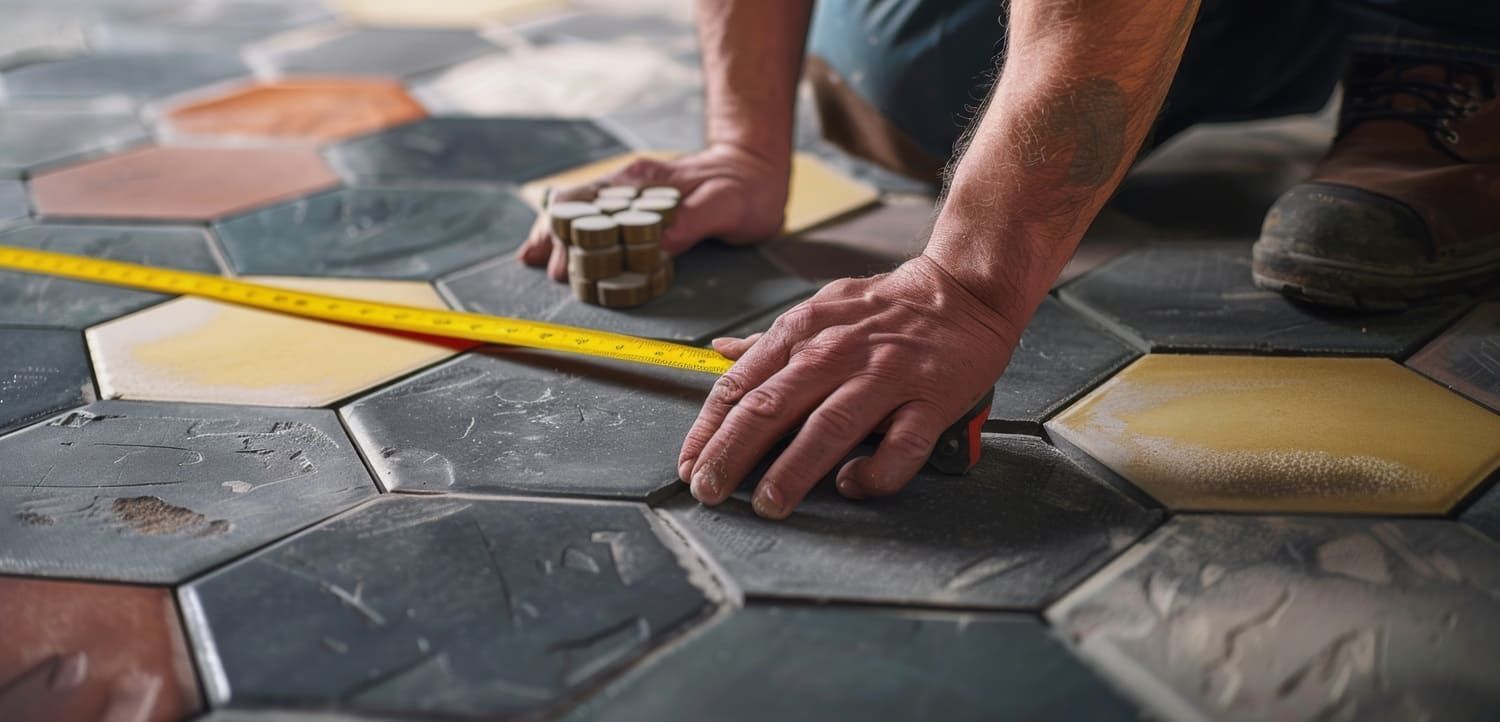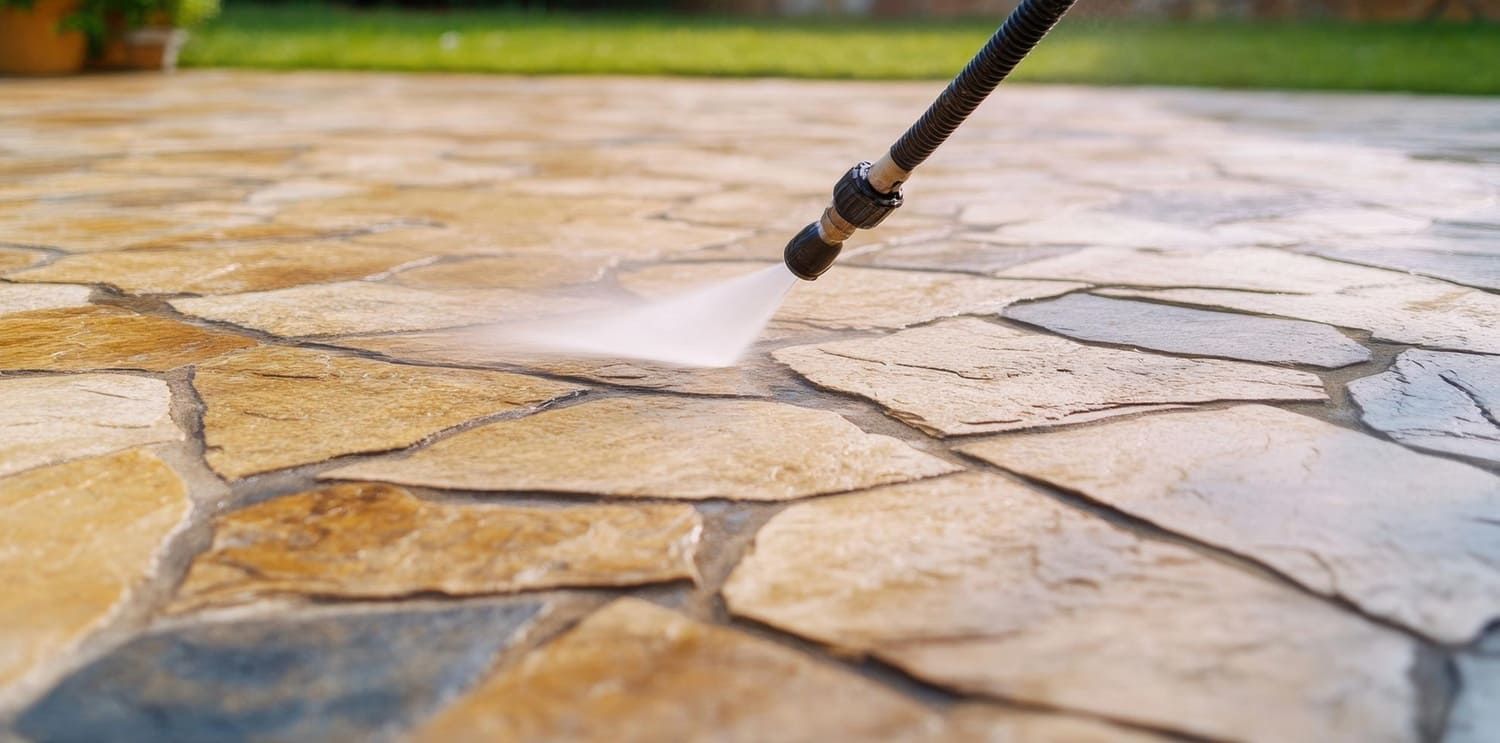Common Problems with Stone Sealers
Stone surfaces, from elegant countertops to sturdy outdoor patios, add a touch of luxury and durability to any space. These surfaces not only enhance the aesthetic appeal of a home but also increase its value. However, maintaining their beauty and longevity often requires the use of stone sealers. Without proper sealing, stone surfaces can become susceptible to stains, water damage, and general wear and tear. While stone sealers are essential for protecting these surfaces, they can also present certain challenges. In this article, we will explore the common problems with stone sealers and provide insights into mistakes to avoid when sealing stone surfaces.

Understanding Stone Sealers
Stone sealers are specialized solutions designed to penetrate and protect the surface of natural stone. They are vital in creating a barrier against moisture, dirt, and other elements that can lead to deterioration. By forming a protective layer, stone sealers help to prevent stains, water damage, and other forms of degradation that can compromise the stone's natural beauty and structural integrity. There are two main types of stone sealers: penetrating sealers and topical sealers. Penetrating sealers absorb into the stone, providing a protective barrier from within, while topical sealers form a protective layer on the stone's surface. Each type has its own set of advantages and limitations, making it crucial to choose the right one based on the specific needs of your stone surface.
Penetrating sealers are often preferred for their ability to protect the stone without altering its natural appearance. They work by filling the stone's pores, making it less vulnerable to water infiltration and staining. On the other hand, topical sealers can enhance the color and sheen of the stone, providing an attractive finish while offering surface-level protection. However, topical sealers might require more frequent reapplication as they are more prone to wear. Understanding the differences between these sealers and their compatibility with your specific stone type is essential for effective stone care.
Common Problems with Stone Sealers
Inadequate Surface Preparation
One of the most common mistakes to avoid when stone sealing is failing to properly prepare the stone surface. Without adequate cleaning, dirt, grime, and previous sealers can prevent new sealers from adhering properly. This can result in uneven protection and a lackluster appearance. Moreover, trapped dirt and debris can lead to the formation of unsightly patches and potential damage over time.
Solution: Before applying a stone sealer, thoroughly clean the surface with a pH-neutral stone cleaner. Ensure the stone is completely dry before proceeding with the sealing process. This step is crucial as moisture trapped beneath the sealer can cause cloudiness or even lead to mildew growth. Taking the time to prepare the surface properly will enhance the effectiveness of the sealer and ensure a more polished look.
Incorrect Sealer Application
Applying too much or too little sealer can lead to problems. Excessive sealer can create a sticky, cloudy residue, while insufficient sealer may leave areas of the stone unprotected. This not only diminishes the stone's appearance but also compromises its durability and resistance to damage.
Solution: Follow the manufacturer's instructions carefully, applying the sealer evenly and in the recommended amount. Use a clean, dry cloth or applicator to spread the sealer, avoiding pooling or overlapping layers. Consistent application ensures that the protective layer is uniform, providing optimal defense against elements that could harm the stone. Additionally, understanding the drying time between coats is vital to achieve the best results.
Poor Sealer Selection
Choosing the wrong type of sealer for your specific stone type can have detrimental effects. Certain stones, such as granite or marble, require specific sealers to maintain their natural appearance and durability. Using an incompatible sealer can lead to discoloration, reduced protection, and even damage to the stone's surface.
Solution: Consult with a stone care professional or refer to the stone manufacturer's recommendations to select the appropriate sealer for your stone type. Investing in the right sealer not only preserves the stone's aesthetic qualities but also enhances its longevity. Remember, using a high-quality sealer that is specifically formulated for your type of stone is a worthwhile investment in the long-term maintenance of your surfaces.
Sealer Incompatibility
Incompatibility between the stone and the sealer can result in discoloration, hazing, or peeling. This is often due to a chemical reaction between the stone's mineral content and the sealer's components. Such reactions can lead to irreversible damage and may necessitate costly repairs or even replacement of the stone.
Solution: Test the sealer on a small, inconspicuous area of the stone before applying it to the entire surface. This will help you determine if the sealer is compatible with your stone. Taking this precautionary step can save time, effort, and money by ensuring that the chosen sealer will work harmoniously with your stone. If any adverse reactions occur during the test, seek alternative products or consult with a professional.
Inconsistent Maintenance
Even with a high-quality sealer, regular maintenance is crucial to preserve the stone's appearance and protection. Neglecting routine cleaning and reapplication of sealer can lead to deterioration over time. Without consistent care, the stone can lose its luster and become more susceptible to damage from environmental factors.
Solution: Develop a maintenance schedule that includes regular cleaning with stone-friendly products and periodic reapplication of the sealer as recommended by the manufacturer. Proactive maintenance not only extends the life of your stone surfaces but also keeps them looking their best. By incorporating these practices into your routine, you ensure that your stone remains a beautiful and functional part of your space.

Mistakes to Avoid When Stone Sealing
Rushing the Sealing Process
Patience is key when it comes to sealing stone surfaces. Rushing through the process can lead to uneven application, missed spots, or premature wear. Such oversights can diminish the stone's appearance and compromise its protective qualities.
Solution: Allocate sufficient time for each step of the sealing process, from cleaning to drying to applying the sealer. Follow the recommended drying times between coats. Taking a methodical approach ensures that each layer of sealer has ample time to bond with the stone, enhancing its durability and appearance. Remember, thoroughness in application pays off in the long term.
Ignoring Environmental Conditions
Environmental factors such as temperature and humidity can impact the effectiveness of stone sealers. Applying sealer under extreme conditions may compromise its performance. High humidity can prevent proper drying, while extreme temperatures can affect the sealer's chemical properties.
Solution: Apply the sealer in moderate temperature and humidity conditions. Avoid sealing in direct sunlight or during rainy weather. Ensuring the right environmental conditions can make a significant difference in the sealer's effectiveness and longevity. Consider planning your sealing project during seasons with mild weather to achieve the best results.
Overlooking Sealer Expiration
Using expired sealer can result in reduced effectiveness and a poor finish. Sealers have a shelf life, and using them past their expiration date can jeopardize their protective properties. Expired sealers may not adhere properly, leading to inadequate protection and potential damage to the stone.
Solution: Check the expiration date on the sealer packaging before use. If the sealer is expired, dispose of it safely and purchase a new one. Regularly updating your sealing products ensures that you are using the best possible materials to protect your stone surfaces, maintaining their beauty and durability over time.
Using Inappropriate Cleaning Products
Harsh or acidic cleaning products can break down the sealer and damage the stone surface. This can lead to a decrease in the stone's shine and protection. Over time, the use of inappropriate cleaners can erode the sealer, leaving the stone vulnerable to stains and damage.
Solution: Use pH-neutral stone cleaners specifically designed for natural stone surfaces. Avoid using vinegar, bleach, or other acidic substances. These specialized cleaners are formulated to clean effectively without compromising the integrity of the sealer or the stone itself, ensuring long-lasting beauty and protection.
Conclusion
Stone sealers play a vital role in preserving the beauty and integrity of natural stone surfaces. At Oceancare Products Store, we offer the best Stone & Grout Sealers to ensure the longevity and protection of your stone surfaces. By understanding the common problems associated with stone sealers and knowing the mistakes to avoid when sealing, you can maintain the stunning appearance of your stone features in your home or outdoor space for years to come.
With the right preparation, application, and maintenance from Oceancare Products Store, your stone will remain a beautiful and durable feature. Remember, when in doubt, consult our stone care professionals to guide you in selecting and applying the appropriate stone sealer for your specific needs. Taking the time to do it right with our top-tier sealers will save you from costly repairs and ensure your stone surfaces continue to impress. By committing to the proper care and maintenance of your stone, you can enjoy the enduring elegance and durability that these surfaces bring to your environment.
Contact us if you have any questions and let Oceancare Products Store assist you in maintaining and protecting your natural stone surfaces with our premium sealing solutions.
All Rights Reserved | Oceancare Products Store


